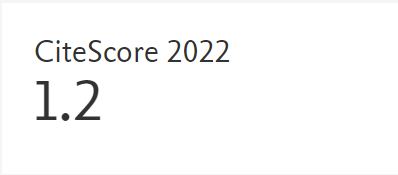Comparison between NIR and UVVIS spectra chemometrics for predicting FCC feedstocks properties
Resumen
En este artículo se hace una comparación entre el desempeño de modelos desarrollados aplicando el análisis quimiométrico a la información espectral en la región del infrarojo cercano (NIR) y en el ultravioleta visible (UVVIS) para predecir algunas de las más importantes propiedades fisicoquímicas de las cargas al proceso de ruptura catalítica. Las muestras utilizadas se obtuvieron directamente de las diferentes unidades de ruptura catalítica en lecho fluidizado (FCC) que posee Ecopetrol S.A., en su refinería de Barrancabermeja. Los resultados muestran la utilidad de las dos metodologías aquí evaluadas para hacer un seguimiento a la calidad de estos tipos de corrientes de refinería y presenta las ventajas y desventajas de cada metodología para predecir las propiedades fisicoquímicas aquí evaluadas.
Referencias bibliográficas
ASTM D1840 (2007). American Society for Testing and Materials. Naphthalene hydrocarbons in aviation turbine fuels by ultraviolet spectrophotometry. Philadelphia, 5pp.
ASTM D4294 (2008). American Society for Testing and Materials. Standard test method for sulfur in petroleum and petroleum products by energy dispersive x-ray fluo rescence spectrometry. Philadelphia, 9pp.
ASTM D4530 (2007). American Society for Testing and Ma terials. Standard test method for determination of carbon residue (micro method). Philadelphia, 20pp.
ASTM D5002- 99 (2005). American Society for Testing and Ma terials. Standard test method for density and relative density of crude oils by digital density analyzer. Philadelphia, 5pp.
ASTM D5863 (2000). American Society for Testing and Materials. Standard test methods for determination of nickel, vanadium, iron and sodium in crude oils and re sidual fuel oils by flame atomic absorption spectrometry. Philadelphia. 7pp.
Baldrich, C. (2008). Prediction of physicochemical proper ties of FCC feedstock by chemometric analysis of their ultraviolet spectrum. CT&F - Ciencia, Tecnología y Futuro. 3 (4), 143-156.
Baldrich, C., & Novoa, L. (2007). Detailed chemical charac terization of petroleum middle fractions by chemometrics analysis of their ultraviolet spectrum. CT&F - Ciencia, Tecnología y Futuro. 3 (3), 173-190.
Bohács, G., Ovádi, Z., & Salgó, A. (1998). Prediction of gasoline properties with near infrared spectroscopy. J. Near Infrared Spectrosc, 6: 341-348.
https://doi.org/10.1255/jnirs.155
Breitkreitz, M., Raimundo, I., Rohwedder, J., Pasquini, C., Dantas, H., Joséb, G., & Araújo, M. (2003). Determina tion of total sulfur in diesel fuel employing NIR spec trophotometry and multivariate calibration. Analyst. 128: 1204-1207. https://doi.org/10.1039/B305265F
Chung, H., Choi, H., & Ku, M. (1999). Rapid Identification of Petroleum Products by Near-Infrared Spectroscopy. Bull. Korean Chem. Soc, 20: 1021-1025.
Chung, H., Ku, M., & Lee, J. (1999). Comparison of near infrared and mid-infrared spectroscopy for the determina tion of distillation property of kerosene. Vib. Spectrosc, 20: 155-163. https://doi.org/10.1016/S0924-2031(99)00034-X
Evdokimov, I., & Losev, A. (2007). Potential of uv-visible absorption spectroscopy for characterizing crude petro leum oils. Oil and Gas Business: Electronic Scientific Journal, 21pp. http://www.ogbus.ru/eng/authors/Evdo kimov/Evdokimov_1e.pdf.
Falla, F., Larini, C., Le Roux, G., Quina, F., Moro, L., & Nas cimento, C. (2006). Characterization of crude petroleum by NIR. J. Petrol. Sci. and Eng, 51: 127- 137.
https://doi.org/10.1016/j.petrol.2005.11.014
Gilbert, W. R., Bueno, A. F., & Lima, F. S. G. (2003). Com parison of NIR and NMR spectra chemometrics for FCC feed online characterization. Int. Symp. on Advances in Fluid Cracking Catalysts (FCC's) Technology, N°6. New York, NY, September 7-11: 48 (2), 220-223.
Loppnow, G. R., Shoute, L., Schmidt, K. J., Savage, A., Hall, R. H., & Bulmer, J. T. (2004). UV Raman spectroscopy of hydrocarbons. Phil. Trans. R. Soc. Lond. A. 362: 2461-2476. https://doi.org/10.1098/rsta.2004.1449
Pasquini, C., & Scali, S. (2003). Real-time monitoring of distillations by near-infrared spectroscopy. Anal. Chem, 75: 2270-2275. https://doi.org/10.1021/ac034054d
UOP Method 269-10. Nitrogen bases in hydrocarbons by potentiometric titration.Philadelphia. 10pp.
Wentzell, P., Andrews, D., Walls, J., Cooley, J., & Spencer, P. (1999). Estimation of hydrocarbon types in light gas oils and diesel fuels by ultraviolet absorption spectroscopy and multivariate calibration. Can. J. Chem, 77: 391-400. https://doi.org/10.1139/v99-041
Xiaoli, C., Hongfu, Y., & Wanzhen, L. (2005). In-line moni toring of several pilot scale catalytic reforming units us ing a short-wavelength near infrared analyser. J. Near Infrared Spectrosc, 13: 37-45. https://doi.org/10.1255/jnirs.455
Zanier-Szydlowski, N., Quignard, A., Baco, F., Biguerd, H., Carpot, L., & Wahl, F. (1999). Control of refining processes on mid-distillate by near infrared spectroscopy. Oil & Gas Sci. and Technol., 54: 463-472. https://doi.org/10.2516/ogst:1999040
Descargas
Derechos de autor 2010 Creative Commons Reconocimiento-NoComercial-CompartirIgual 4.0.

Esta obra está bajo una licencia internacional Creative Commons Atribución-NoComercial-CompartirIgual 4.0.












